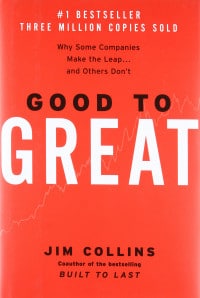
There’s a management sickness that wants to pretend that all of the non-managers are just interchangeable cogs that can be controlled by the right set of targets and rewards.
That doesn’t mean that targets and rewards aren’t important…
But the belief that they’re a substitute for actual leadership and culture is a destructive myth.
Companies are only successful when the people who work there do the work that their managers don’t even know to check.
And this goes triple for service companies.
Why Money Follows Talent
To really understand this, just think about the difference between a true, high-impact A player and a B player in your service industry.
It’s not a slight difference, is it?
But much of it is the result of soft skills and intangibles.
Attitude, charisma, mindset, influence on both customers and other techs, etc.
Now focus on the fact that an A player will typically generate significantly more sales, referrals, and 5-star reviews than a B player.
As in, at least 50% more if not double.
In fact, you could probably do the mental math right now of what your revenue would look like if everyone on your team was an A player.
It would be a significant jump.
Because in service businesses, money follows talent.
And Talent Follows…
And talent goes wherever it wants, basically. Because talented A players can pretty much get hired on anywhere.
So they choose where they want to work. Just like any talented free agent would.
And so they choose to work for companies that:
- Provide them with a great boss who appreciates them
- Provide them with great coworkers who are professional and great to work with, while also being at or near their level
- Respect them as more than cogs in a machine
- Don’t disrespect their craft or force them into situations that force them to do things other than “the right way”
- Pay them and incentivize them properly.
In other words, talent follows leadership and culture.
Yes, properly set targets and rewards are part of that, but they are arguably the least important part.
Great people aren’t pigeons that can be trained and managed through operant conditioning.
Great people are spirited professionals who have to be lead and inspired.
How to Tell When You’re Getting This Wrong
The biggest warning sign?
If you find yourself placing increasing controls onto your people in an attempt to instruct the mediocre rather than inspire the talented, you’re getting this wrong.
If you imagine your all-pro dream team and realize that they’re nothing like your current team, you know you’ve got a problem.
Other warnings signs include:
- If your managers aren’t actively looking to celebrate wins (and routinely finding them)
- If you’ve never fired or replaced someone for a lack of cultural fit (rather than poor performance)
- If you have no rituals, competitions, or rewards for craftsmanship or service
- If employees aren’t willingly referring and trying to recruit family and friends
- If peer pressure isn’t working for you rather than against you
If you have any of these warning signs in your service company, your number one priority should be to fix your leadership and cultural problem.
Until you do that, you can’t effectively hire the people that’ll drive results.
And until you hire the A players you need, your other efforts at growth will never lead to stable increase in revenue and profitability.
Two Business Book Examples: Good to Great and Willing To Fail
 In smash-hit business book, Good to Great, author Jim Collins speaks about this dynamic in two different chapters.
In smash-hit business book, Good to Great, author Jim Collins speaks about this dynamic in two different chapters.
In Chapter Three, “First Who… Then What,” Collins goes to great length to pound home the priority of hiring great people over developing a great strategy.
Here are some money quotes from Chapter 3 directly addressing this point:
“Those who build great companies understand that the ultimate throttle on growth for any great company is not markets, or technology, or competition, or products. It is one thing above all others: the ability to get and keep enough of the right people.”
“Yes compensation and incentives are important, but for very different reasons in good-to-great companies. The purpose of a compensation system should not be to get the right behaviors from the wrong people, but to get the right people on the bus in the first place, and to keep them there.”
“The only way to deliver to the people who are achieving is to not burden them with the people who are not achieving.”
And in Chapter 6, A Culture of Discipline, Collins makes a Key Point:
“[George Rathmann, CEO of Amgen] understood that the purpose of a bureaucracy is to compensate for incompetence and lack of discipline — a problem that largely goes away if you have the right people in the first place. Most companies build their bureaucratic rules to manage the small percentage of wrong people on the bus, which in turn drives away the right people on the bus, which then increases the percentage of wrong people on the bus, which increases the need for more bureaucracy… and so forth. Rathmann also understood an alternative exists: Avoid bureaucracy and hierarchy and instead create a culture of discipline.”
“The good-to-great companies built a consistent system with clear constraints, but they also gave people freedom and responsibility within the framework of that system. They hired self-disciplined people who didn’t need to be managed, and then managed the system, not the people.”
 And in the criminally under-rated and under-read business book, WTF?! (Willing to Fail), Brian Scudamore addresses the challenge of “getting the right people on the bus” very early and vividly.
And in the criminally under-rated and under-read business book, WTF?! (Willing to Fail), Brian Scudamore addresses the challenge of “getting the right people on the bus” very early and vividly.
When Brian first had his vision for what 1-800-GOT-JUNK? could and should become, he instantly realized that none of his current employees fit that vision.
He had 11 of the wrong people on his bus.
So he fired them all and started fresh, hiring for cultural fit first.
Here’s a quote that tells that part of the story:
“Soon I had five trucks and eleven employees. We were doing half a million in revenue, and at twenty-four, I’d already bought my own house. From the outside, things seemed perfect. In reality, I was totally stressed out and hated coming in to work. The company I had seen in my mind when I got excited about junk hauling wasn’t the company I was running.
When I thought about why work had stopped being fun, I realized it was pretty simple. I didn’t like being around the people I’d hired, and at that point, they weren’t keen on me either. The environment had turned toxic, and the team didn’t believe in my vision or fit the culture I was trying to create. The day I decided to fire all eleven employees was one of the scariest days of my life. It meant acknowledging that I’d failed as a leader, which I said when I let them all go. It also meant I’d be running the business solo for a few months while I rebuilt. But I knew in that moment that having the right people on board was more important than literally anything else. Since then, culture fit has been a nonnegotiable part of our hiring strategy.”
And here’s how he describes life after he started hiring for cultural fit:
“Having just painted a clear picture of the people I needed, I was able to recognize—and recruit—that merry band of adventurers I had seen in my mind. These were definitely the right people. And you know what? It turns out that the right people usually know a lot of other right people. They would often bring in their roommates and friends, and the vibe was entirely different. The vibe—and the people—were happy, hungry, hardworking, and hands-on.
What I had been searching for was the entrepreneurial spirit. I needed to be around people who saw possibilities and who had the courage, confidence, and craziness to go for it. I surrounded myself with those types of people: happy, hungry, hardworking, and hands-on—the 4Hs is what we call them.”
From there Scudamore went to build 1-800-GOT-JUNK? into a $500 million multi-national franchise, which is still marked by an enviable company culture that makes hiring and retaining the right people a priority.
What About You and Your Bus?
So there you have it:
Money follows talent and talent follows culture and leadership,
Now the only question is:
Are you going to make that work for you?
Or let it work against you?
- Getting a Foot in the Door — Of Perception - November 27, 2025
- What Digital Superstars Know About Offline Advertising - November 17, 2025
- Unmistakable: A Tale of Two Boots and Branding Done Right - November 8, 2025
